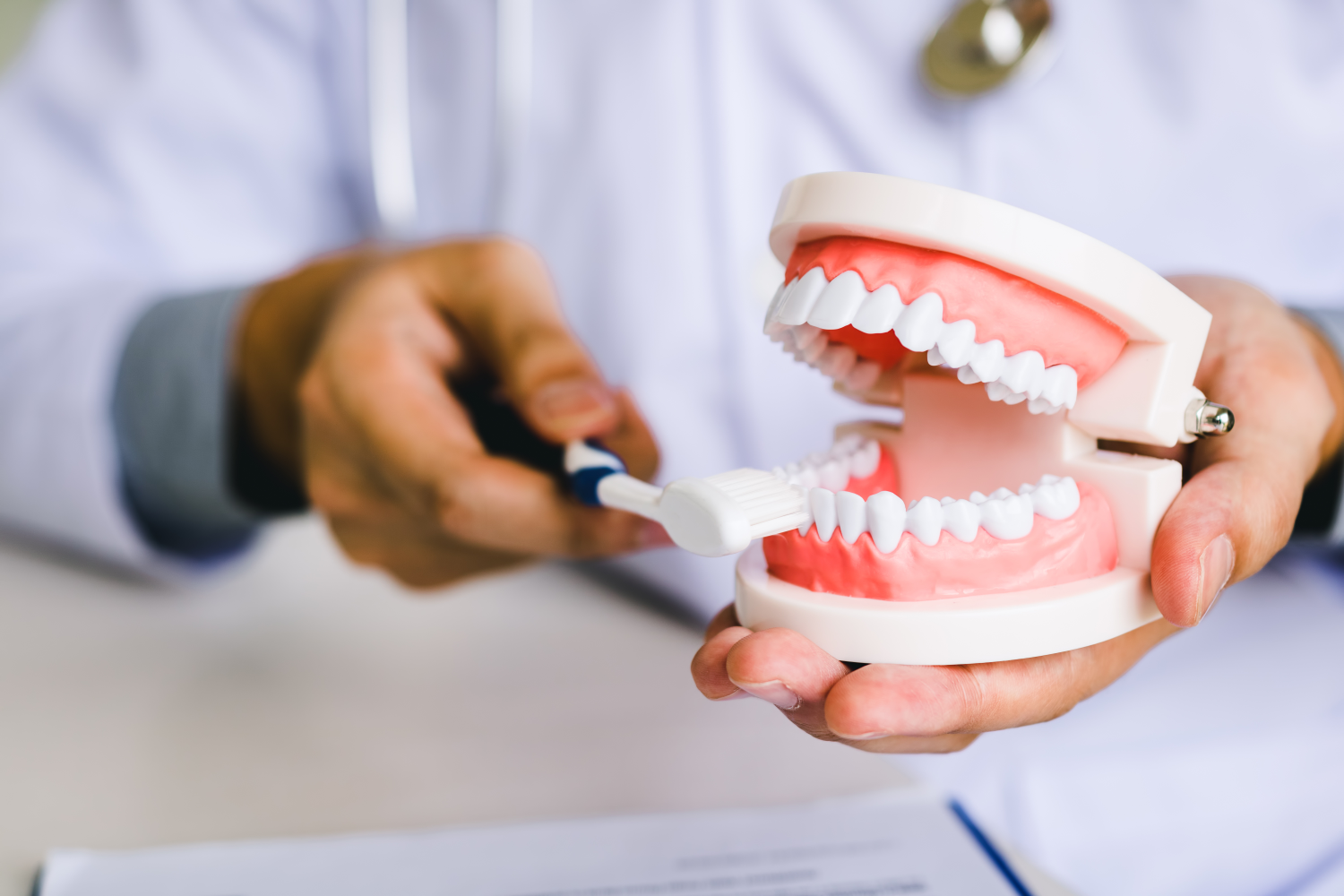As we continue into the first half of a new year, many people are trying to maintain their resolutions to increase their healthy habits. We vow to exercise, eat right, and maybe even visit a physician for the first time in a while. If this is you, don’t forget to add your oral health into the mix! Keeping up a good oral hygiene routine will pay dividends long into the future. But what exactly does that entail?
Taking Care of Your Teeth and Mouth
Dental problems have been shown to affect the health of the rest of your body, so it’s important to take good care of your dental health. There are many habits and lifestyle changes you can make that will help you maintain healthy teeth and gums. Remember you don’t have to be perfect. Any movement in the right direction can go a long way toward taking care of your teeth and mouth. Excellent dental habits take time to build, but your smile is worth it!
Brush Your Teeth at Least Twice a Day
Brushing your teeth is important, but making sure you’re brushing correctly is even more important. Choose a soft-bristled toothbrush and the toothpaste of your choice. It’s best to use a toothpaste that contains fluoride, which helps strengthen tooth enamel and fight tooth decay. Hold your toothbrush at a 45-degree angle and brush with small, circular motions. Using steady but gentle pressure, make sure you brush both the front and back of each tooth. If you are holding your toothbrush at the right angle, you should also be gently massaging your gum tissue as well. Also, don’t forget to brush your tongue! Plaque builds up on your tongue just as it does on your teeth. Brushing your tongue will help prevent bad breath. One last thing – your toothbrush will not last forever! Be sure to replace your toothbrush every three months or when it starts to look worn out.
Floss Your Teeth
Brushing and flossing are the fundamentals of home dental care. People who are very good at brushing may choose to let flossing slide. But flossing is about more than dislodging food that may be stuck between the teeth. What it really does is disrupt the bacteria that lives between each tooth and stimulate blood flow to the gum tissue. This reduces plaque buildup in between your teeth and will help keep gum disease away. If you have difficulty flossing, don’t give up! There are many different types of flossers on the market nowadays that are endorsed by the American Dental Association. You can use traditional string floss, ready-made floss picks, or even a water-flosser. There’s no doubt that to protect your teeth you need to brush and floss every day.
Use A Mouthwash
Some people choose to skip using mouthwash because they figure it’s the same as using a breath mint. The truth is that it does much more than that. Mouthwash does a great job of killing leftover bacteria in the mouth that causes plaque, bad breath, and gum disease. Using a fluoride rinse in the evening after brushing and flossing can prevent tooth decay and ward off cavities. A side note on fluoride rinses – don’t rinse your mouth out after using them! You want that fluoride to do it’s magic while you’re sleeping. A nightly fluoride rinse will strengthen your enamel and also remineralize your teeth, keeping them strong and healthy!
Eat Well For Oral Health
There are many food choices you can make that will help keep your teeth healthy. Eating crunchy fruits and vegetables may help strengthen your teeth and almost act as a natural brush, scraping plaque away as you chew. Avoid excess sugar, soft drinks, and other acidic foods to protect your teeth and gums from excess enamel wear and tear. Drinking lots of water throughout the day acts as a natural rinse that will keep your mouth fresh and clean. There is some evidence that chewing a piece of sugar-free gum after meals can increase saliva production, reducing the effect of acidic foods on your teeth.
Visit Your Dentist
Even if you have a great home dental health routine, visiting your dentist at least twice a year is essential to prevent gum disease and other dental problems. A visit to your dentist is made up of two parts – an examination and a cleaning. During the examination, your dentist will check your teeth for excess plaque buildup, cavities, and tartar. They will examine your gums for any signs of early gum disease, and also determine that your tongue and other tissues are healthy. Your dentist is also a wealth of information and medical advice. They can help you choose the best toothbrush, toothpaste, and other dental care items for you to use at home.
After your examination is complete, a dental hygienist will perform in-depth teeth cleaning, also called oral prophylaxis. During this, your hygienist will scale your teeth, removing any tartar that may have built up since your last visit. Finally, they will polish your teeth and floss, leaving you with a bright, healthy smile.
If you’re near Minnesota and around the Twin Cities, contact us today to set up an appointment.
Healthy Mouth, Healthy Body
The best time to take care of your teeth and gums is before problems even start. So make sure you brush your teeth, floss your gums and get to the dentist regularly. By keeping bacteria in your mouth at bay, you’ll avoid dental problems such as gum disease and even tooth loss. If you need to get more information, don’t hesitate to call! Keep smiling!
